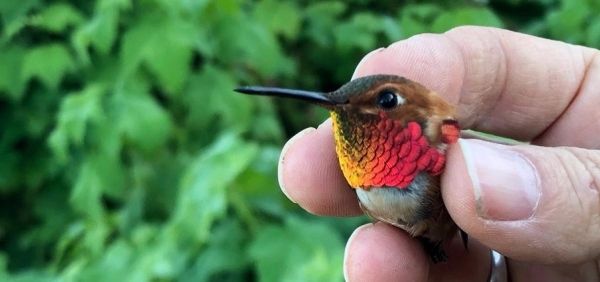Plucky, beautiful and declining in numbers at about a 2% annual rate, the rufous hummingbird makes its long annual migration in different timing and route patterns based the birds’ age and sex, new research by Oregon State University shows.
The findings, published in the journal Avian Conservation & Ecology, are important because the more that is known about how rufous hummingbirds migrate, the more that can be done to ensure birds of different ages and sexes have the resources they need each year on their journey up and down the western part of North America.
“Different age-sex categories of rufous hummingbirds use alternative routes and differ in migration cycles and distributions,” said the study’s corresponding author, Josée Rousseau, a Ph.D. candidate in the OSU College of Forestry. “Our results seem to indicate that the age-sex categories could be affected in different ways by things like habitat loss and climate during migration. If we keep that in mind, we can make conservation efforts that help these amazingly feisty little creatures – and I describe them that way with the utmost respect – have the resources they need during their migration across the landscape.”
Continue reading at Oregon State University
Image via Oregon State University


